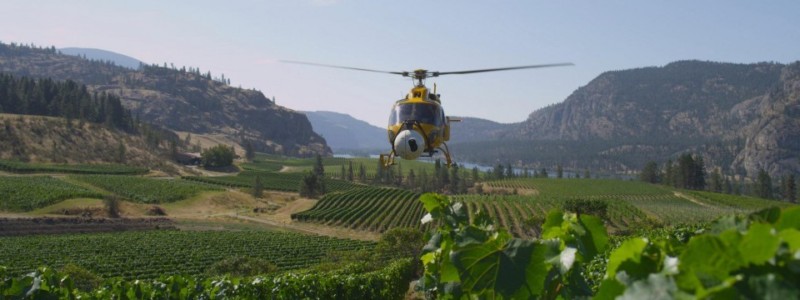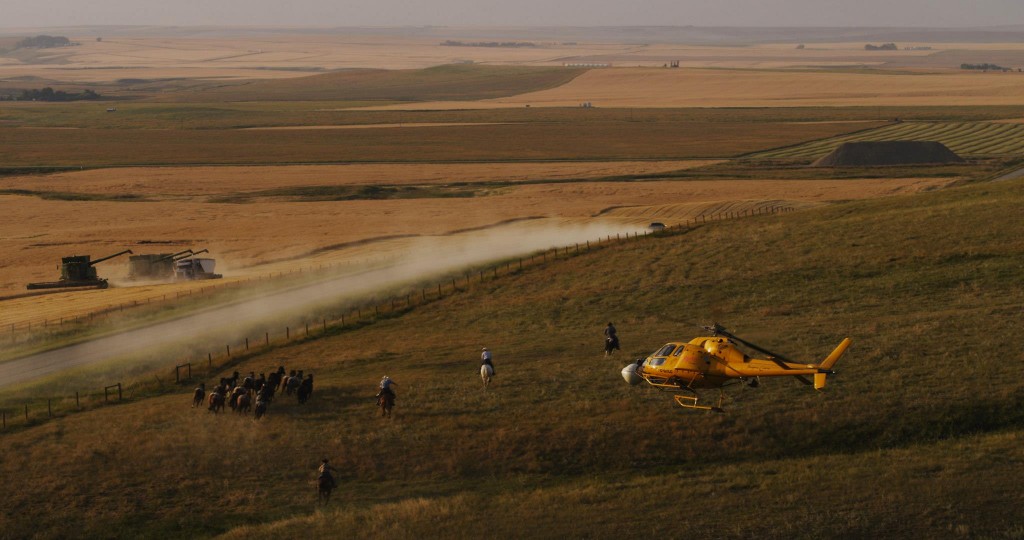
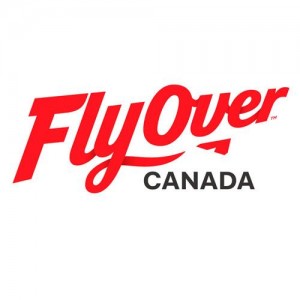 FlyOver Canada, a next-generation attraction simulating the sensation of flight, opened June 29, 2013 at Vancouver’s Canada Place. Rick Rothschild of FAR Out! Creative Direction served as Creative Director on the project. A former President of the Themed Entertainment Association (TEA) and Senior VP – Executive Show Director at Walt Disney Imagineering, Rothschild previously had served as Show Director on Soarin’ Over California, a flagship attraction at Disney California Adventure park.
FlyOver Canada, a next-generation attraction simulating the sensation of flight, opened June 29, 2013 at Vancouver’s Canada Place. Rick Rothschild of FAR Out! Creative Direction served as Creative Director on the project. A former President of the Themed Entertainment Association (TEA) and Senior VP – Executive Show Director at Walt Disney Imagineering, Rothschild previously had served as Show Director on Soarin’ Over California, a flagship attraction at Disney California Adventure park.
Joe Kleiman spoke with Rick Rothschild for InPark Magazine:
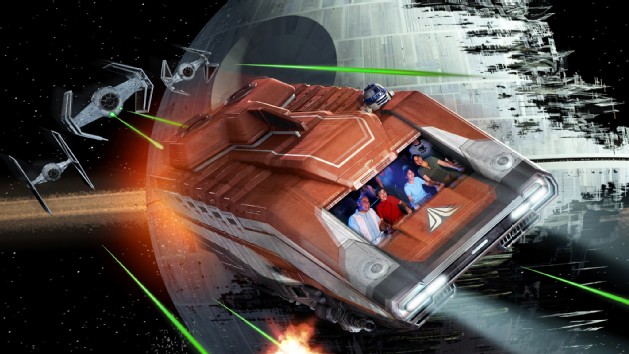
JK: FlyOver Canada is a next-generation flying/gliding, media-based motion attraction in the style of Soarin’. What are the key elements that make this experience distinct from earlier genres of motion theater such as represented by Star Tours and Back to the Future – The Ride?
RR: With rides like Star Tours, the idea is that you’re in a vehicle. You view the world through a window while moving through an environment. In contrast, FlyOver Canada gives you the opportunity to look around the world you are flying across, without the intermediary of a vehicle. The experience is much more like that of a bird flying forward and moving around as it flies – or like being Peter Pan – which was in fact much of the inspiration for me. Guests can move their head to view the world around them much like a bird while the sensation of surrounding motion is created by our camera, attached by a gyro mount to the helicopter.
Another important distinction is the live-action capture. With FlyOver Canada as with Soarin’, the action is all live action as compared to a large number of simulator experiences that are principally produced as CG fantasy based environments. FlyOver is about experiencing real places and extraordinary environments in a way not seen before. It ends up being a very personal experience.
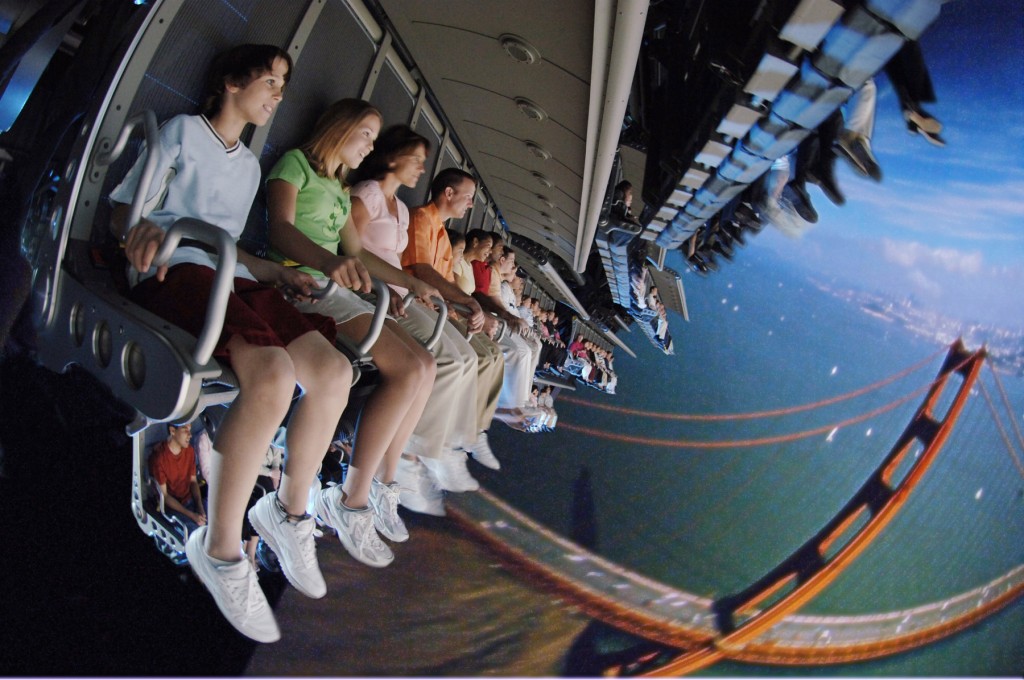
JK: In terms of technology and technical design, how would you compare Soarin’ and FlyOver Canada?
RR: Here are some of the similarities. Guests view a dome-based experience while suspended in nine, open-air, flying vehicles. The orientation of the guest in relation to the dome screen, the idea of having image below you, to the side, in front of you, and somewhat truncated at the top are all quite similar.
Now for the important differences. What distinguishes FlyOver first is that the production is all-digital. Soarin’ was shot on film in the IMAX 15 perforation/70mm format; we filmed and projected at 48 frames per second (fps). FlyOver was captured and is presented digitally; shot and projected in 4K digital at 60 fps. With high resolution and higher frame rate, it’s like watching 3D without glasses. The closest objects we captured in FlyOver are probably 15-20 feet from you, but for the most part, everything’s beyond the surface of the screen, out beyond 30 feet in the actual shot, which is beyond the projection surface of the dome from the guest’s eye. Everything you look at feels natural and real with appropriate parallax. Being able to experience this attraction with no glasses also adds to the sense of reality, given we have added effects like mist and wind.
We filmed with a Phantom 65 digital camera with a Nikon spherical lens. We are projecting with the first commercial installation of a Christie 4K 60 frame projector in the world, with a specially designed and manufactured lens from Schneider Optics. Given our principal capture was digital, it opened up the creative opportunity for us to do a number of unique transitions and effects in post production.
Finally, there’s the length of the attraction. At almost a full 8 minutes, its nearly double the length of Soarin’. Because of this, we were able to shoot in more locations. Conceptually, we wanted to create something that appropriately showcased the landscape and the diversity of the breadth of Canada. Not constrained by capacity and hourly numbers that theme parks demand, the longer experience also allowed us to have sequences that are a little bit longer than the individual sequences in Soarin’.
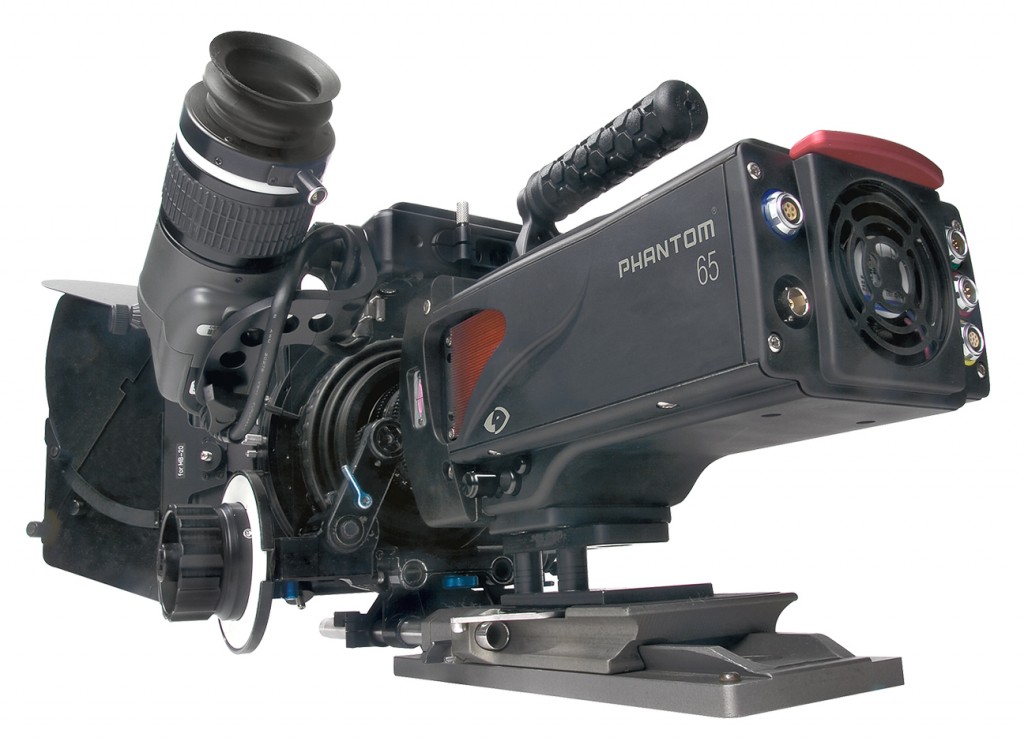
JK: What were some other reasons you elected to shoot digitally with the Phantom? In the field, how did it compare to shooting Soarin’ in IMAX?
RR: In the dozen or so years that separated the Soarin’ production from FlyOver, technology provided us with a completely new set of opportunities to think about in regard to what we could do with production and how we could go about doing it.
Using the Phantom added tremendous flexibility. An IMAX camera can hold only a very limited amount of film at one time, and when shooting in 48 fps it gets used up twice as fast as at the standard frame rate. With the largest IMAX film canister available, we were able to get a full 90 seconds shot before having to land the helicopter and reload the camera. So essentially, we were filming two 45-second sequences at a time while shooting Soarin’.
With FlyOver, even shooting at the higher rate of 60 frames per second, the digital magazine on the Phantom 65 camera still allowed us to shoot 11 minutes before we had to reload, and it was easy to carry extra magazines on the helicopter. We were able to land, reload within a minute, and be in the air filming again without having to return to our base production camp. It was a very different approach from a production standpoint and it allowed us a lot more creative freedom and spontaneous opportunity.
There are a number of cameras that we evaluated before coming to our production decision. The thing that led us to the Phantom 65 was the belief that the chip being the largest chip physically in any 4K camera on the market would help us technically capture in our spherical format. Its physical chip size is equivalent to a 65mm film negative as compared to other digital cameras that are more the size of a 35mm film negative. Capturing the image spherically was found to be benefited by pushing it to a larger sensor. We also found the Phantom provided us appropriate creative options to capture at different speeds, both over-cranking and under-cranking.
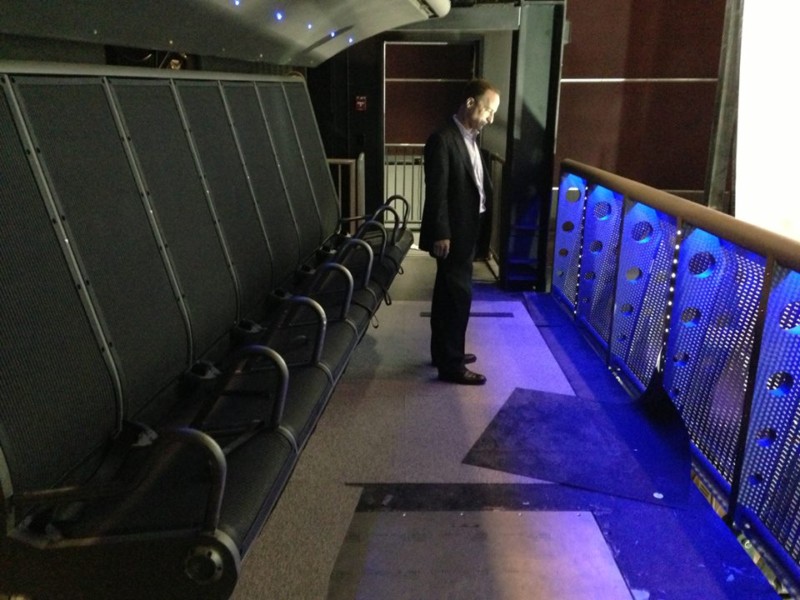
JK: How is FlyOver Canada owned and operated?
RR: FlyOver is a separately ticketed, standalone attraction in Canada Place in downtown Vancouver. Soaring Attractions is the Canadian entity that created and operates it. The two principals in this company are Stephen Geddes and Andrew Strang. They’re both Canadians and Vancouver residents.
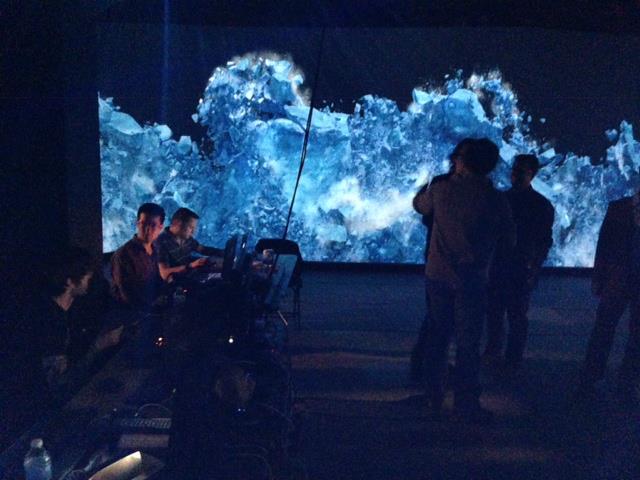
JK: How did you collaborate with pre-show producer Moment Factory and the dome show production team, Sherpas Cinema, to unify the themes of the pre-show and main show?
RR: The overarching idea of FlyOver was to feature the diversity of Canadians and the expansive Canada landscape. If the state of California was a big subject for Soarin’ to tackle, the country of Canada is even bigger. Our “pre-show” – Moment Factory’s UPLIFT experience, was actually looked upon from the beginning more as “Chapter One” of a two-chapter guest experience. UPLIFT lasts around seven-and-a-half minutes, nearly as long as the main show.
We were very happy to collaborate with a company having such a rich background. Moment Factory has worked on an acclaimed projection show on the Parliament building in Ottawa and did the Madonna Superbowl halftime show in 2012. They’re currently in the final stages of installing a unique large scale multimedia installation at LAX’s new international terminal.
We met with the Moment Factory team a number of times to discuss how their piece would connect with the dome show experientially, connecting both emotionally and conceptually. Our approach from the start was that their team and the dome show team (Sherpas Cinema) would work together with our core creative team to produce a guest experience that properly and appropriately connected the pre-show with the dome’s FlyOver ride, in particular with reference to locations across Canada. We made a few discoveries and a few changes as a result while we were filming, but nothing that drastically changed our conceptual view of the project.
We hired Sherpas out of Whistler, BC as our principal media capture team for the dome ride show. Dave Mossop was our director and was in conceptual discussions with us and with Moment Factory as the two “chapters” were developed. In part, it was these discussions between the two parties and us that made this whole concept succeed.
Andrea Wettstein with Six Degrees Music out of Calgary was our principal composer for the ride and Vincent Letellier, who works with Moment Factory, was the composer for the pre-show. Vincent was farther along when Andrea joined the process; however, when Andrea began her independent work composing the ride score, we were delighted to discover that the two scores had common musical themes, drawn from the Canadian cultural personality. As we were moving along, the two composers were encouraged to share with one another. So, in the end a bit of intended thematic bookending and connection exists, while the compositions themselves are very unique and appropriately different.
The pre-show we did for Soarin’ was much different. The story of flight in California is the subject of that pre-show, so setup context was there for the ride, and it helped place the show in the context of the California Adventure theme park as a whole. It’s done through photos on the walls and is more a queue line experience than a true pre-show, if you will.
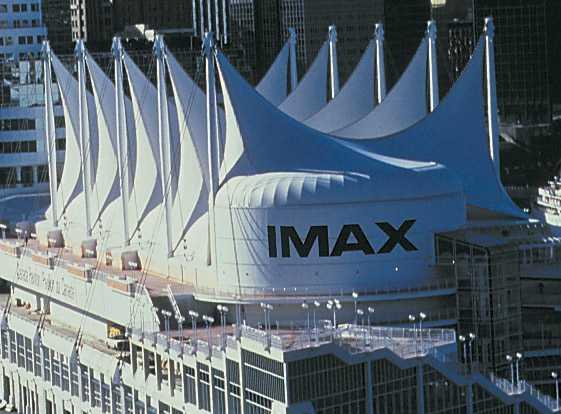
JK: With Soarin’ you had the luxury of new construction. What were some of the challenges and solutions of retrofitting the building at Canada Place to house FlyOver Canada?
RR: Any challenge one faces, whether a blank piece of paper or a preexisting facility, comes with constraints that you begin to work with. In the case of FlyOver Canada, the constraints started with the facility. This was not just a preexisting facility, but a preexisting facility on a large harbor pier several floors above pilings that also support a full convention center that sits directly below the original theater space. So there were both spatial and structural challenges to integrating our dome and ride system.
The space dictated that we could only have a dome 19m (60ft) in diameter. For comparison, each of the Soarin’ domes is around 84 ft in diameter, and the capacity of Soarin’ is 87 people. Due to the smaller dome, FlyOver‘s capacity is 61 people. There are nine vehicles (3 tiers, each with 3 vehicles) with both systems.
There are key differences between FlyOver and Soarin’ in how the dome is entered and the size of the vehicles. Soarin’ has single-level boarding, which is proprietary to that attraction. Everything at FlyOver is a bit smaller and our guests first take stairways to one of three levels outside the dome ride experience to board. The FlyOver ride support structure looks a lot like the old Hollywood Squares set, with each of the “squares” containing one of the ride vehicles.
The FlyOver building originally housed an IMAX theater. We removed the concrete floor and support structure of the theater, and drove several new columns below the convention center to support the ride.
The size of the building wasn’t the only constraint on the size of the dome. With current digital video projection technology, we would be unable to do a Soarin’ size ride without tiling multiple projectors. Practically speaking, our 60-ft dome is the maximum size for the state-of-the-art, single-projector technology we have in place to operate efficiently.
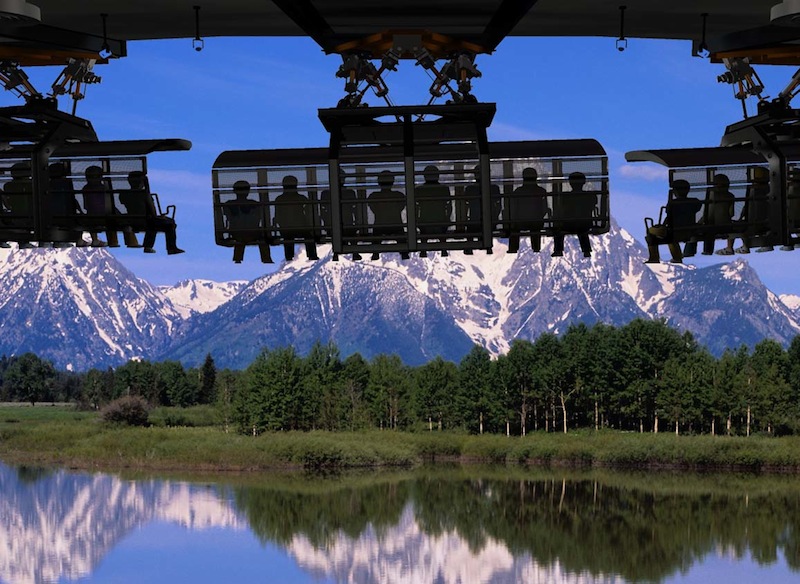
JK: Tell us about the ride technology you selected.
RR: Brogent Technologies is the manufacturer of the ride vehicle.
They have an association with Vekoma, which allows them to leverage Vekoma’s substantial expertise in ride manufacturing as well as its sales and marketing resources. Brogent developed the vehicle on their own, and E-DA park in Southern Taiwan is the site of their first system installation. Brogent, which is also based in Taiwan, has a strong background in advanced flight simulator technology.
Each of our ride vehicles has a full six degrees of movement, with all the benefits of advances in engineering and technology since Soarin’ was first created to help us provide a step up in flying ride experiences.
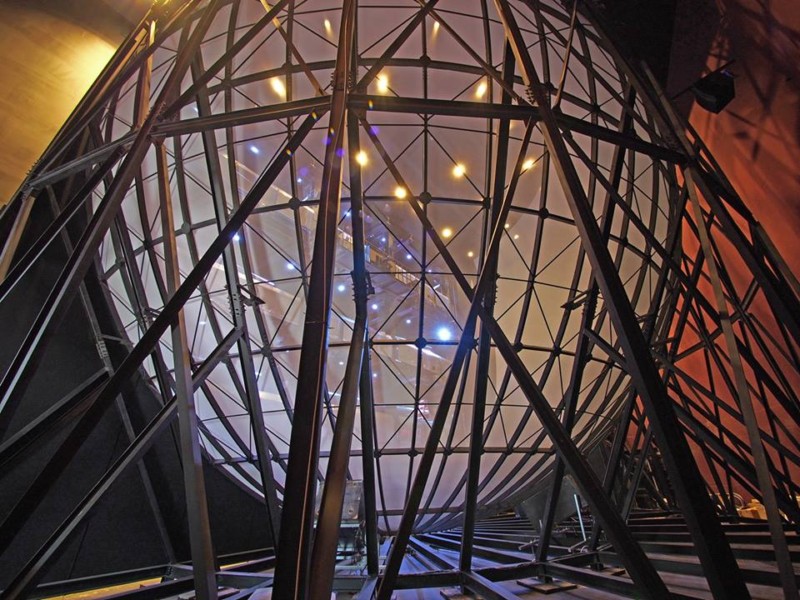
JK: Do you have any thoughts on FlyOver now occupying the space that once housed the world’s first IMAX 3D projector?
RR: I was actually involved in Disney’s participation with Telcom Canada as the executive creative producer when Disney agreed to create a special Circlevision experience for Telcom’s pavilion at Vancouver Expo 86. We developed and produced a film experience entitled Portraits of Canada, which featured 13 “stories” drawn from the diversity of Canada and its unique multicultural peoples.
For me to be able to come back to Canada a quarter-century later and take a tiny bit of what I learned about this country back then to help create something that is inspirational to Canadians and to visitors from around the world has been a wondrous and most pleasurable experience.
The way I see it is that one of the highlights of Expo 86 – the old IMAX theater – has ended up providing a great opportunity for Andrew and Stephen 26 years later – to bring a completely fresh but still equally special and unique entertainment venue to Vancouver. With their tenacity and vision, they’ve brought the next generation of Canadian entertainment and media technology to Canada Place. It’s been an honor and so exciting for me to be a part of their dream.
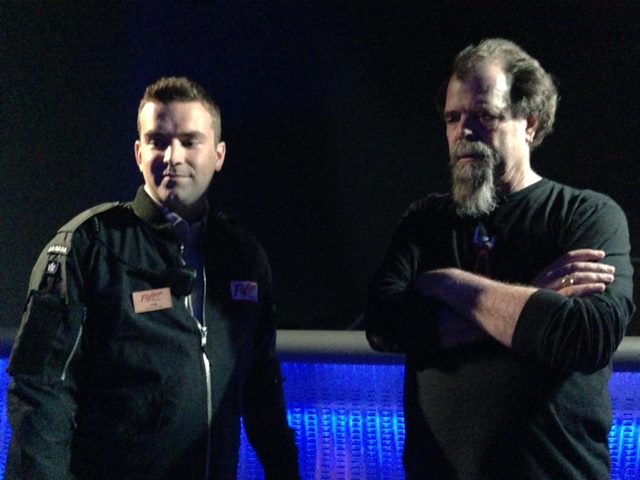
JK: Did O Canada at Epcot have an influence on this attraction?
RR: It’s interesting how life plays out. Back in 1981-82, I was at Epcot during its “birth” – as an Imagineer in charge of show programming for a number of attractions, including The American Adventure, France and Canada. I spent a lot of time watching the Canadian Circlevision show O Canada come to life. Watching it during final installation in part led me to make the decision with several other Imagineers that when Epcot was finished, we needed to take a vacation and visit Canada. In the early summer of 1983, we drove a motor home up from California spending most of our 30-day trip in Western Canada – up into Alberta, through Calgary, up through the Rockies, and out across British Columbia and out onto the islands. I was hooked on Canada as a wondrous place from that trip.
So there’s been a personal journey for me – getting interested in Canada through Disney in the early 80’s, learning about Canada with Expo 86, finding it to be such an extraordinary place – and then to return and do FlyOver Canada. As a personal journey of one American, it’s been quite interesting and rewarding.
RELATED INPARK ARTICLES:
Rick Rothschild’s Predictions from 2008
China Cinema from InPark Issue 41 (includes coverage of Super 78’s flying rides at China’s Happy Valley parks).


